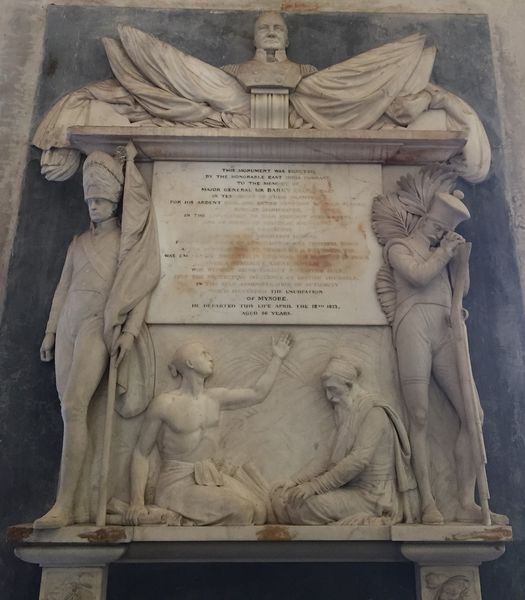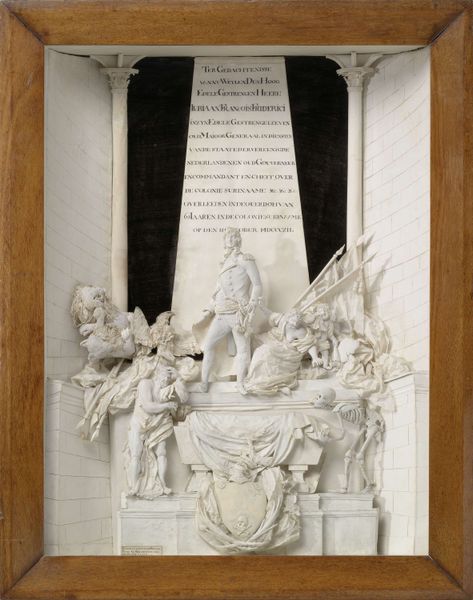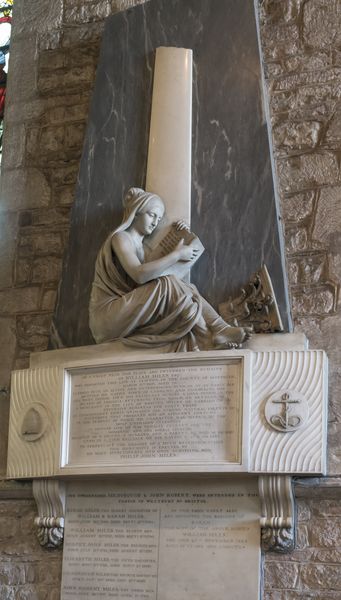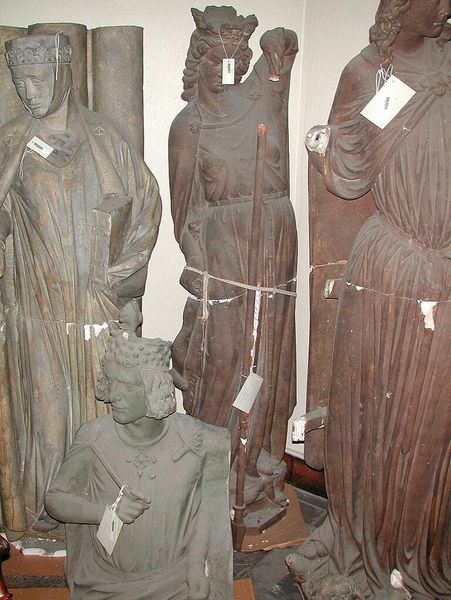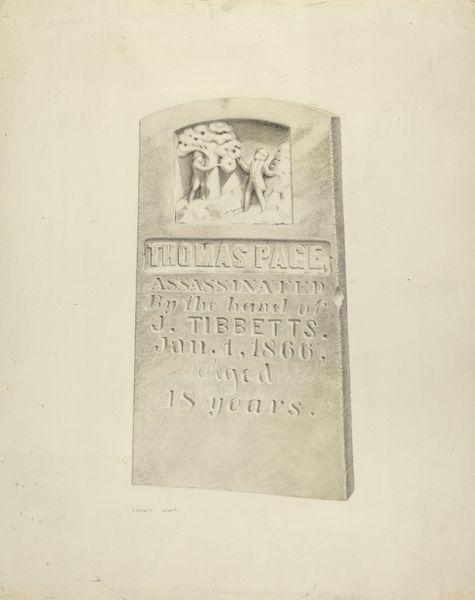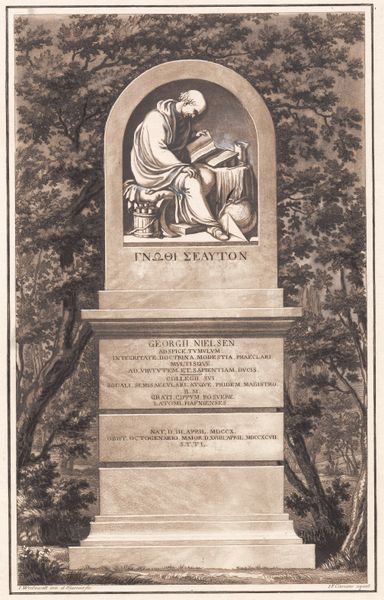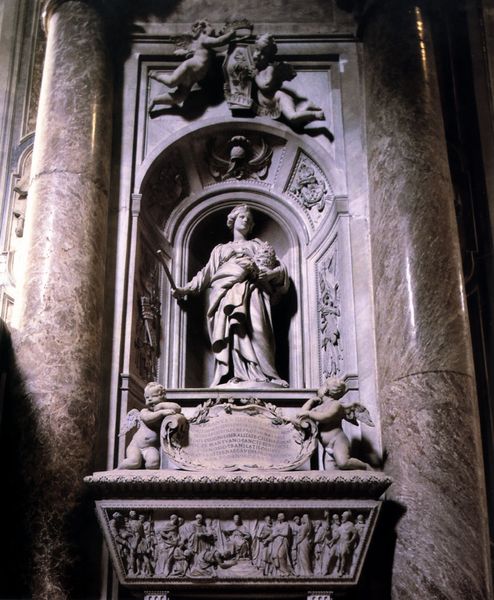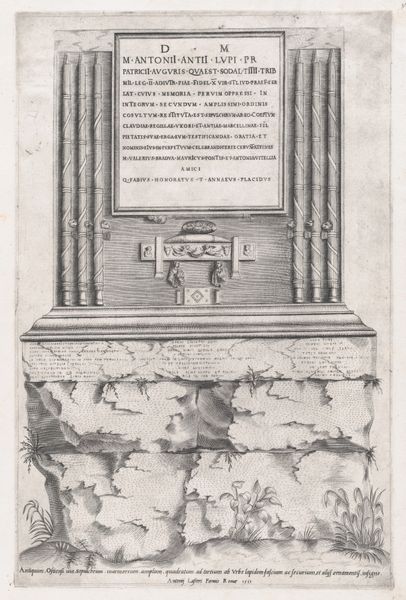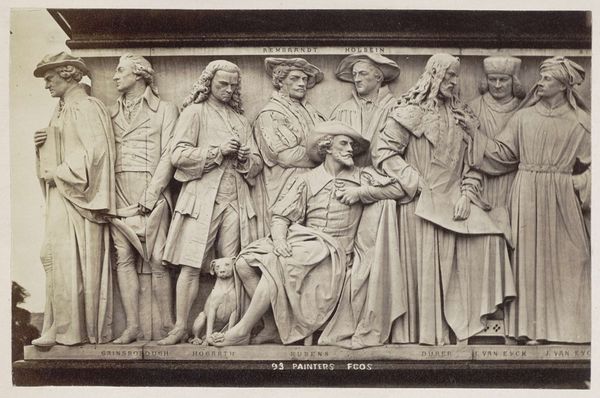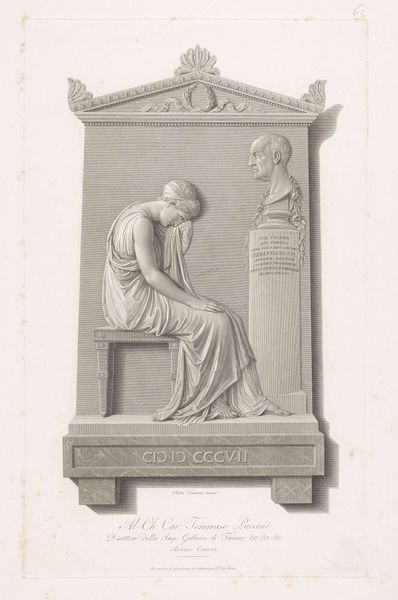
relief, sculpture, marble
#
portrait
#
stone
#
sculpture
#
relief
#
sculpture
#
marble
Copyright: Public domain
Curator: Let’s discuss these memorial sculptures. Here we have two reliefs honoring members of the Brathwaite and Warre families, located in Epsom. Both seem to be crafted from white marble. Editor: They are stark, aren’t they? The use of white marble against what I imagine are equally pale church walls… the scene almost feels like an apparition. There’s a tangible sense of grief emanating from the figures depicted. Curator: Indeed. Let’s start with the one on the left. Note the clean, Neoclassical lines and the pyramidal composition. The female figure, likely representing Grief, is positioned leaning on a column supporting what looks like a funerary urn. The folds of her drapery and the angle of her head all contribute to the overall sense of melancholy. The artist demonstrates careful attention to classical forms. Editor: And what of the visual symbolism? Her downward gaze and the limpness of her hand evoke feelings of loss and resignation. Also, the funerary urn would certainly have signified mortality to contemporary viewers. It reminds us of how strongly the Victorians leaned on this sort of classical iconography to process death. Curator: The adjacent memorial shares a similar visual language, although the composition is distinct. Another draped female figure appears here, this time slumped against a column, perhaps to convey a greater weight of sorrow than the first. Note the differences in surface texture; this memorial features smoother finishes overall, perhaps influencing how light interacts with the sculpted form. Editor: I can’t help but wonder about the familial relationships reflected in these pieces. The inscriptions are so detailed! They speak to legacies, to connections through generations. And the placement, side-by-side… they almost feel like conversation pieces for the deceased, reaching out across time. Curator: From my perspective, this is a clear engagement with classical tropes within a formal vocabulary inherited from sculptors such as Canova. We see an artist deeply invested in established modes of representing mourning through pose, gesture, and carefully calibrated spatial arrangements. Editor: It's fascinating how visual motifs like the draped figure of Grief recur across centuries and cultures, revealing how humans grapple with universal themes of loss and remembrance through art. These are more than sculpted marble—they're vessels carrying complex emotions across time.
Comments
No comments
Be the first to comment and join the conversation on the ultimate creative platform.

